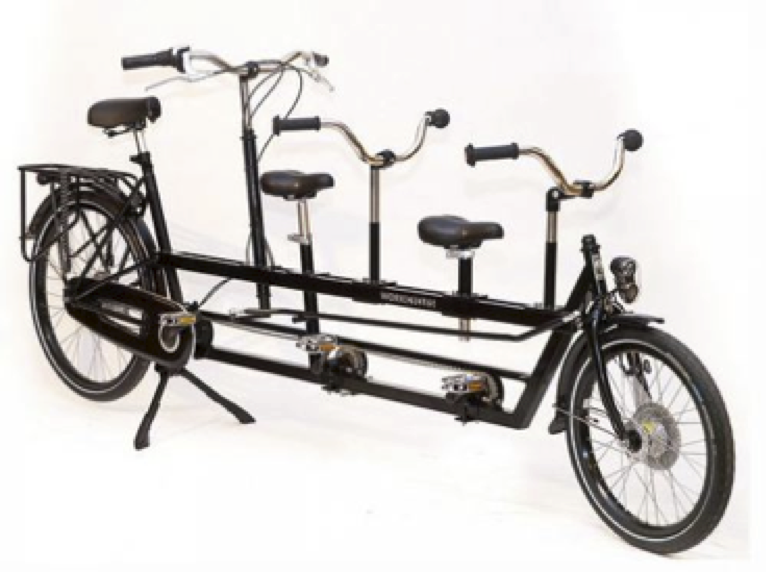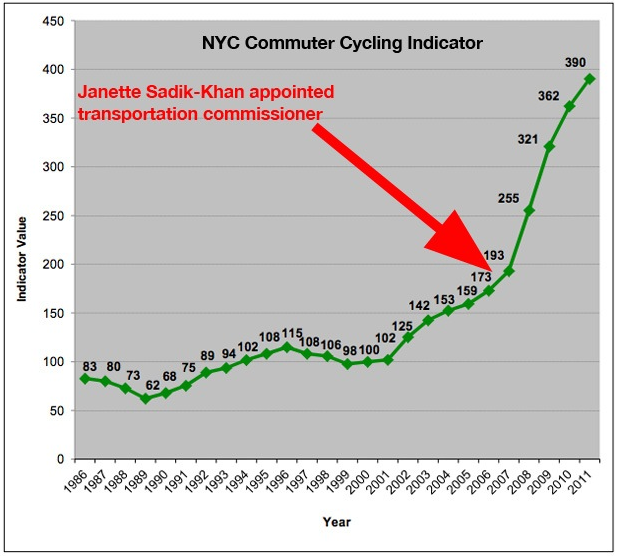 As an economist and keen utility cyclist (sorry, no lycra here) I have a close eye on the economic arguments surrounding urban transport investment. The question I often ponder is whether investment in a cycling infrastructure network (on or off road) in Australian cities is justifiable on purely economic grounds. To be specific, would the arguments used to justify road construction support more bike lane construction?
As an economist and keen utility cyclist (sorry, no lycra here) I have a close eye on the economic arguments surrounding urban transport investment. The question I often ponder is whether investment in a cycling infrastructure network (on or off road) in Australian cities is justifiable on purely economic grounds. To be specific, would the arguments used to justify road construction support more bike lane construction?
We already know that bike paths increase house prices. But more seriously, are there objective economic grounds that suggest one set of road space is preferable to another on grounds of efficiency?
For the benevolent dictator, the crux of the question revolves around the tradeoff, or opportunity cost, of installing a bike lane.
Physical tradeoff
On-road lane space can have a cost close to zero where roads, for historical reasons, are sufficiently wide to allocated space to the lane. Other times, a vehicle lane or parking capacity must be sacrificed. But again, it one is considering costs, the lost opportunity for a bike lane should be factored into cost-benefit analysis of vehicle lanes.
This basic physical trade-off is obvious, and at least partly considered in most analysis. Another aspect to the physical trade-off, in the spirit of Ronald Coase, centers on efficiency and coordination.
bike lanes define property rights more clearly, and contribute to more coordinated and more peaceful shared use of a common-pool resource. For me that’s the primary economic reason to take the normative position in favor of bike lanes. More clearly defining property rights will reduce the costs associated with the decision to bicycle
It is the same basic economic rationale that supports defining vehicle lanes on road space. Although difficult to quantify, efficiency gains for total use of road space are important considerations.
Any keen cyclists should spare three minutes to watch this video, making the property rights argument in the most entertaining way.
Public funding tradeoff
Not only is the physical space a tradeoff, but funding for cycle lanes could easily be spent elsewhere in the public budget. Admittedly, budget decisions do not prioritise on the basis of cost-benefit analysis, but are very political. If one is to asses the opportunity cost of bike lane funding, it should be against other politically likely transport investments.
In addition, any cost savings made by delaying expansion of vehicle road space through modal shifts, should be considered.
Network effects
In exactly the same way road traffic forecasts assume that growing scale of the road network will ‘make room’ for vehicle transport demand, which is referred to as induced demand, growth of a bike lane network will induced cycling.
One would expect that network effects actually mean that there are increasing returns to bike lane investment. The first bike lane, that has one origin and destination, will be of little value. However, as an integrated network expands, it connects more trip origin and destination combinations at an exponential rate.
Network effects are extremely important when analyzing the success of pilot trials of bike lanes, which is the stage many Australian capital cities find themselves. Any bike lane investment program needs consider whether network effects justify bringing forward investment to create a ‘critical’ mass in terms of the size of the network.
New York City found out just how strong the cycling uptake can be in reaction to improved infrastructure. According to Felix Salmon the lesson of this chart, then, is that if you build bike lanes, cyclists will appear to fill them. (ht. AV)
Externalities
The externalities associated with any urban transport development can be significant. Although on massive problem is that the two most commonly reported externalities – of reduced health costs, and reduced greenhouse gas emissions – are in fact non existent.
One might at first assume that the individual health benefits from cycling, which genuinely exist (but are private benefits), would lead to reduced expenditure on public health. However, the academic research on the matter suggests that net effects are much more subtle, and may in fact lead to more costly health care,
The reason is, that healthier people live longer. Over their lifetime healthier people usually incur more health costs because they simply have longer to do it. And even healthy people have extensive health problems associated with ageing. The net impact on health costs from having a healthier population depends on both the increase in the tax contribution from being more productive over possibly a longer period, and the increased heath costs from simply living longer (more particularly, being old longer).
Reducing greenhouse gas emissions is another argument often used in favour of bike lanes, and the increase in cycling, and decrease in motorized transport, they will encourage. This is not true in an absolute sense, but in a geographic sense. Urban air pollution will definitely decline if bike lanes create a modal shift in transport, but this this may simply result in increasing air pollution elsewhere when the cost savings of all the new cyclists is spent on other consumption (the rebound effect).
One study estimated the reduced greenhouse gas emissions from a car-free housing development in Vienna, but found that these car-free households had somewhat higher emissions in the categories air transport, nutrition, and ‘other’ consumption, reflecting the higher income per-capita. After all, you can’t spend all day at work producing goods, and not consume. Even if you save, you are simply delaying consumption.
Given these considerations, it is completely uncertain whether net externalities in the form of health care cost reduction, and greenhouse gas emissions, are positive.
Overall, the economics of bike lanes is complex, which is in part due to the competition for urban road space, network effects, and externalities. A proper analysis would require a lengthy report, but I hope this brief introduction provides a clue as to how subjective any analysis is likely to be, and how the decision may simply be a social choice. My personal view is that investing in a low cost genuine urban transport option in the form of a bike lane network (on and off road), has overall economic and social benefits, compared to alternative urban transport investment.
Tips, suggestions, comments and requests to [email protected] + follow me on Twitter @rumplestatskin
